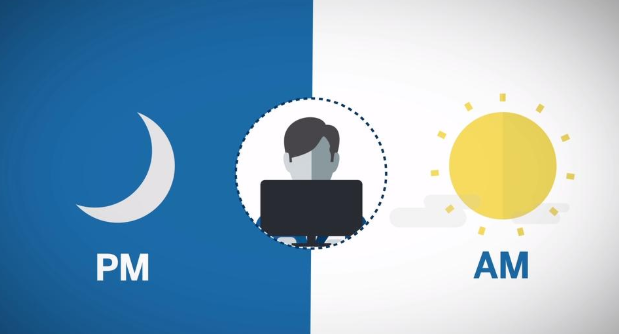Why Do We Have A.M and P.M.?

Splitting the days in half doesn’t work well for everyone. In fact, there are relatively few countries that officially bifurcate the days into “a.m.” and “p.m.”. While places like the U.K., Republic of Ireland, India, the United States, and other former-British-Empire countries employ the split indication—it’s not incredibly common. This often begs the question, “why bother?” among critics. Well, as it turns out, there’s some real history behind it. The 12hr-split day is based on a rich tradition of astronomical fascination/tracking. With the beginnings of the 12hr-split day harkening back to ancient Mesopotamia, Egypt, and Greece, it’s a traditionally effective way to track time. Standing for “ante” (before) “meridiem” (mid-day) and “post” (after) “meridiem” (mid-day), a.m and p.m. represent a split between the highest points and lowest points the sun resides in as our planet turns.
Secondary Night Time Tracking
Ancient civilizations would use sundials to track the movement of the sun throughout the day. This helped with creating calendar systems, due to the relative length of days during different parts of the year. While tools like sundials (and eventually obelisks in Egypt) were effective during most days—they could not track the entire day. Night time redundancies were used alongside this timekeeping method as a result. Water clocks, older than sundials themselves, were employed in these ancient societies to keep things ticking. Easily measurable amounts of in-flow and out-flow water could track the time without solar aid. As it were, all one had to do was measure the height of water in a basin to establish a passage of time.
Early Clocks
Thus, the graveyard shift was integral in keeping ante-meridiem and post-meridiem times aligned with the passage of the sun and moon across the sky. Eventually, however, mechanized timekeepers came into play. While the first mechanical clocks had 24hr dials (as well as early chronometers), 12hr clocks were found to be easier to engineer/build. From the 14th century onward clocks evolved from 24hr to 12hr time across Northern Europe. This method of timekeeping would remain locked-in to the anglophone (English-speaking world) and bleed into our current age.
A Final Thought
While there are multiple other influences that established 12hr time and its symbols across the globe, the above information is the thick of it. While 24hr time gives each hour of the day its own number—and is useful by its own merits—the 12hr-split drives home a simple pairing of night and day. Millenia have been spent perfecting this time system. So, whether you see Arabic or Roman numerals on the dial, a 12hr representation of time hopefully has some more context. We here at TimesTicking will continue to enjoy every hour of the day available to us—no matter how it crosses our door.
Times Ticking has been in operation for more than 30 years, since 1982. We have performed watch repair for customers both locally and internationally. If it Ticks! We KNOW it! Our team of watch repair technicians have a combined experience in watchmaking of over 120 years.

